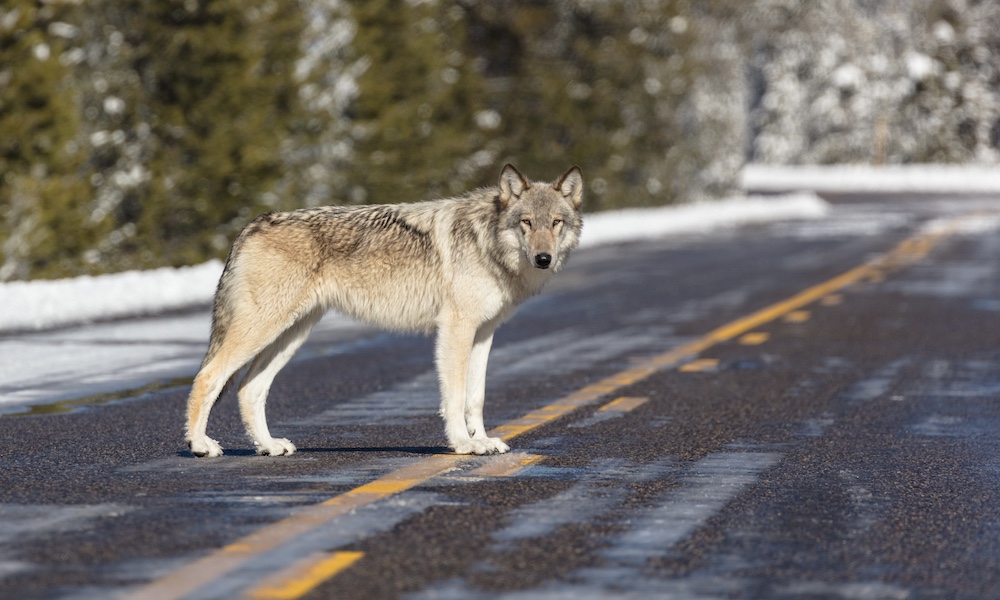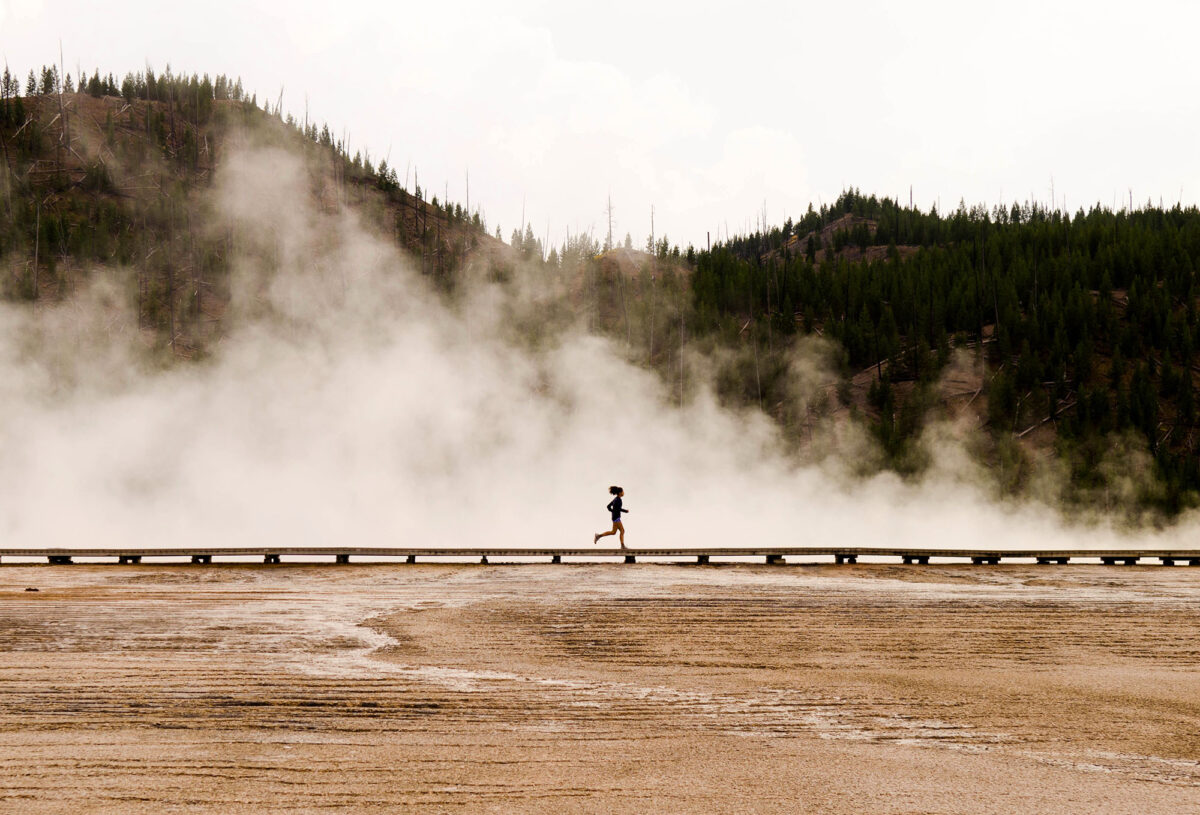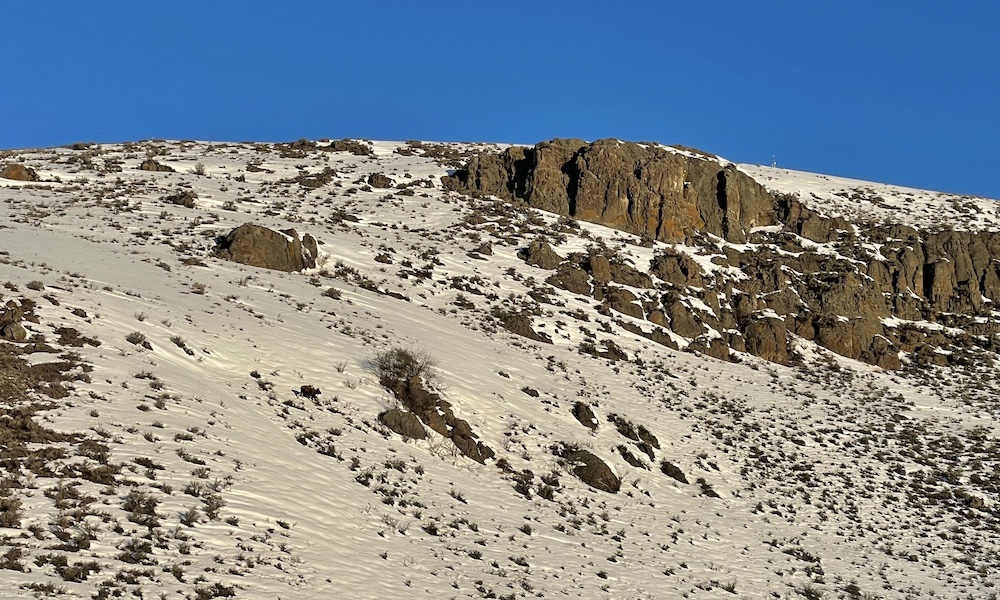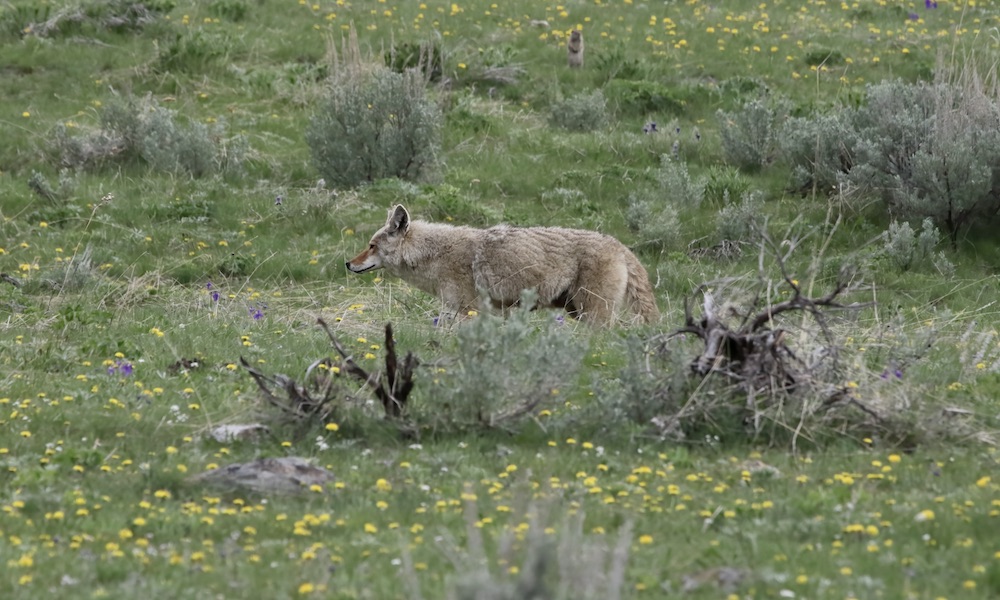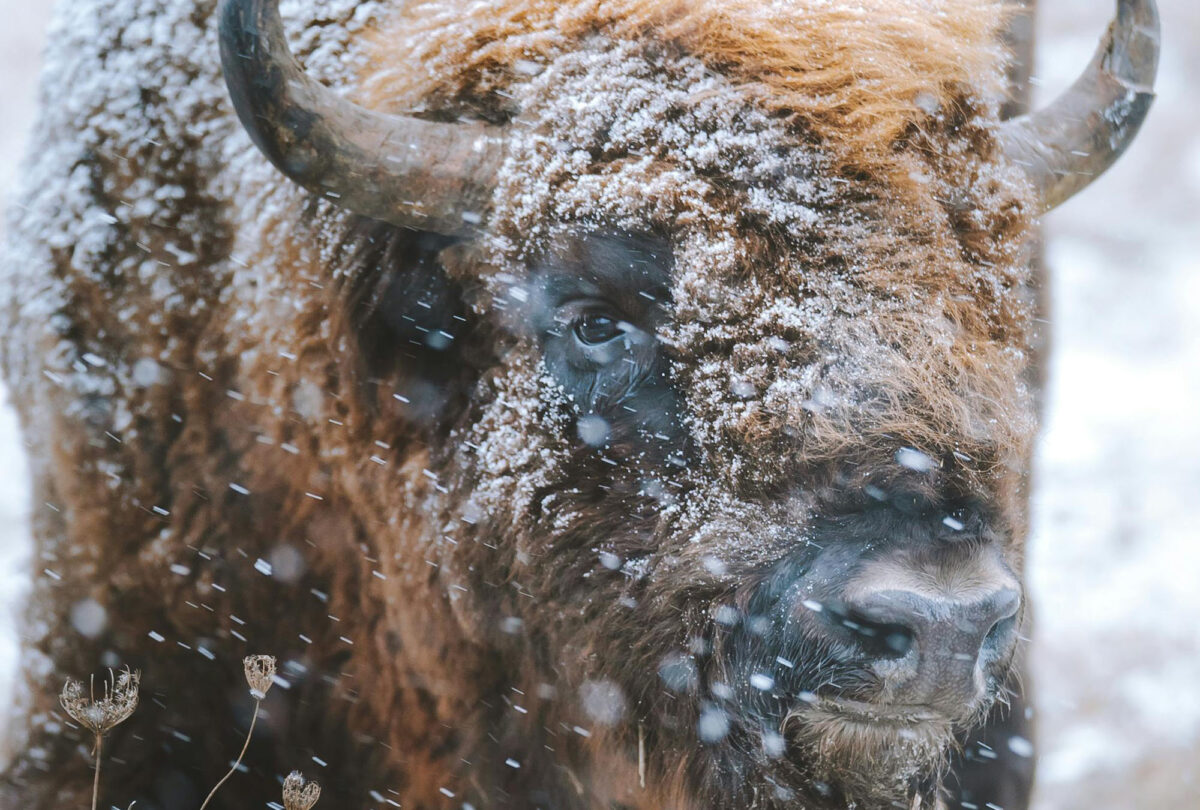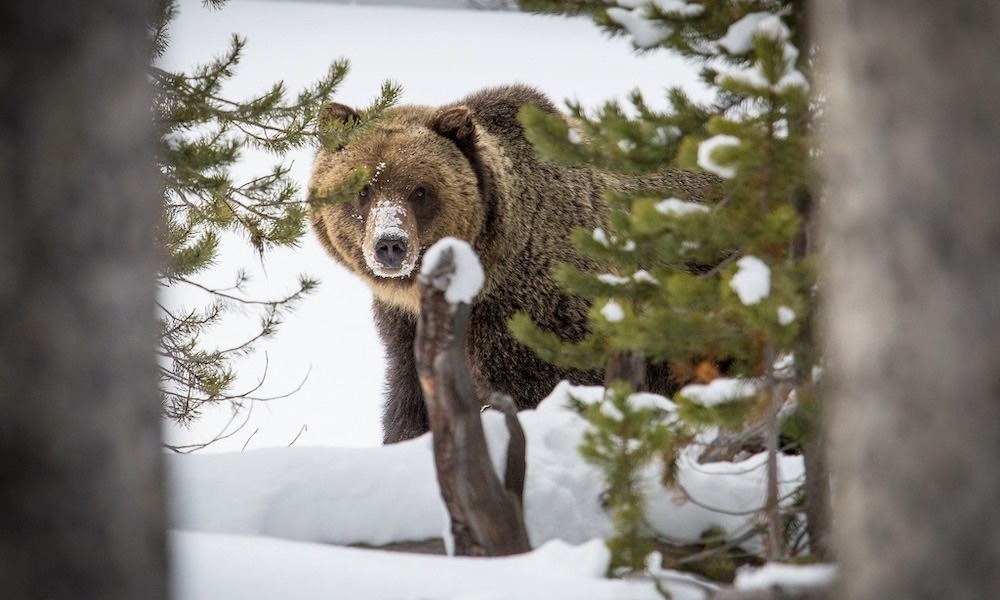A wolf pack from Yellowstone National Park devoured a cow elk last week on a school football field outside the park.
The kill site became widely known after Jim Baldwin, superintendent at Gardiner Public Schools, shared an image showing a park ranger standing over the elk carcass. (See graphic image below.)
The Gardiner School is in the town of Gardiner at Yellowstone’s North Entrance. (Part of the school building is inside the park.)
The kill occurred after dark on April 11 and the wolves had vanished back into the park before dawn on April 12.
Elk sightings at the school, and in town, are common. But wolf sightings in the populated district are rare.
Linda Veress, a Yellowstone National Park public affairs officer, told the Billings Gazette: “It’s common for elk, bison and pronghorn to be at the school grounds, less so bears and wolves. It is very rare that we document wolves within the town’s developed footprint over the last 28 years.”

The 8-Mile wolf pack, which inhabits part of the park’s northern range, is believed responsible for the elk kill, according to the Billings Gazette.
The school, alongside the Yellowstone River, is a K-12 facility that serves about 200 students.
If wolves were to show at the school during the day, it’s likely that they’d be hazed with rubber bullets and/or cracker shells.
–Generic Yellowstone wolf image courtesy of NPS / Jacob W. Frank
